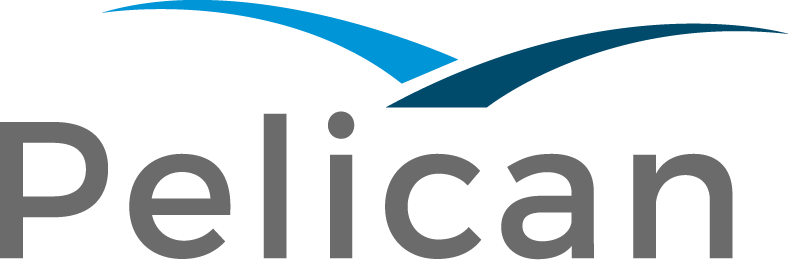Transforming Trade Finance Operations through Intelligent Document Processing
Trade finance has long been synonymous with laborious and paper-intensive procedures, often tangled in geographic and political complexities when verifying trade existence for claiming value. This has led to a perception that reliance on paper is an unavoidable evil in the industry. Furthermore, mounting compliance concerns have added another layer of intricacy to document management. It is important to note that more than half of the respondents in an ICC survey pointed out that certain trade-specific document types like Bills of Exchange, Promissory Notes, Bills of Lading, and Certificates of Origin must be maintained in physical format due to governmental mandates in certain Geographies. However, financial institutions today are making substantial investments to eradicate paper-centric processes, recognising them as the final frontier in the Digitalisation of trade. Recent initiatives like the Model Law on Electronic Transferable Records (MLETR) and the Uniform Rules for Digital Trade (URDTT) have accelerated the shift to digital trade processes by eliminating paper trails from their origins.
Nonetheless, end-to-end Digitalisation—meaning documents originating in digital form—is a journey that still lies ahead, and there is a considerable distance to cover before achieving the desired level of maturity. In the interim, there is a need to enhance the ongoing digitisation endeavors. One technology that has shown promise in this regard is Optical Character Recognition (OCR) which enables the scanning and converting of paper documents into digital formats. By digitising paper documents, OCR solution helps electronic editing, searching, and integration into other digital processes. Implementing OCR technology has been a widespread practice among banks for over a decade now to address the initial level of the digitisation maturity model.
At this level, OCR technology predominantly concentrates on extracting key data information from predefined standard fields, relying on the structure and layout of the document forms. This entails identifying various zones and key fields to extract the necessary information. A significant challenge with this approach arises from the unpredictable variability of document layouts in real-world scenarios, especially the inherently complex trade documents that could cause concern. Consequently, training OCR systems to accommodate a wide range of document variations becomes cumbersome, often hindering banks from achieving the desired digitisation levels with optimal efficiency. With billions of paper-based documents still around, this traditional OCR model is not scalable for the banks and their customers unless they invest in a large resource pool for considerably longer.
To tackle these challenges, modern OCR systems integrate machine learning techniques that intelligently identify key fields within each document and continually refine their performance through feedback loops. This approach reduces the need for extensive OCR training on diverse document layouts. Instead, it employs auto vision recognition technology to identify the most pertinent key areas and fields for precise information extraction. While structured data extraction is more accurate via traditional OCR, the new generation of advanced OCR engines adeptly handles unstructured data and goods-related information using AI and ML, including natural language processing techniques. Adopting this approach significantly reduces training efforts and enhances extraction quality.
This new approach, known as Intelligent Document Processing (IDP), leverages AI, Machine Learning, and Natural Language Processing to streamline the digitisation of trade documents. It bolsters operational efficiency and improves the standardisation of data elements required for compliance. In essence, traditional OCR helps with simple text extraction, whereas IDP handles intricate documents, tables, and unstructured data with the finest extraction levels. The solution understands the context and meaningfully extracts data from diverse document types.
The benefits of the IDP solution can be summarised as follows:
- Amplified effectiveness through AI elements applied to traditional OCR.
- Accurate extraction of goods data from a tabular form—often a challenge for traditional OCR engines.
- Proficiency in extracting multi-language and handwritten text.
- Support for various formats, including PDFs, email, and txt.
- Open architecture with extensive APIs for seamless integration and traceability.
- Continuous learning from feedback to enhance accuracy.
- Application of context to structured and unstructured data, yielding meaningful outcomes.
- High-speed data processing.
- Automatic document classification with over 98% accuracy.
- Advanced extraction maturity levels with swift turnaround.
- Ability to handle low-resolution images, which helps achieve considerable data extraction.
By embracing advanced IDP technologies built upon traditional OCR, the trade finance industry can effectively surmount the cumbersome nature of paper-based processes and expedite the digitisation endeavors. While traditional OCR sets the foundation for digitising documents and automating fundamental data extraction, IDP-based solutions propel this further by expertly managing complex trade documents on a larger scale. This technological advancement will enhance efficiency, mitigate compliance risks, and transform trade finance operations to the next level of the digitisation maturity model.
About Pelican
With its 25 years of experience in providing Artificial Intelligence solutions to the financial services industry, Pelican AI brings its expertise to the Trade Finance ecosystem to innovate the operational and compliance requirements of documentary trade. Pelican Secure Trade utilizes the AI disciplines of Natural Language Processing (NLP), Knowledge Based Systems and Machine learning in addition to Intelligent Document Processing to provide an end-to-end documentary trade automated processing solution.
Pelican Secure Trade removes the pain from the current manual processing and provides a solution that resolves the current operational limitations and addresses the growing challenge of Trade Based Money Laundering, Trade Based Terrorist Financing, Trade Based Trafficking and Trade Fraud - securing global trade, managing risks, and protecting your reputation.



